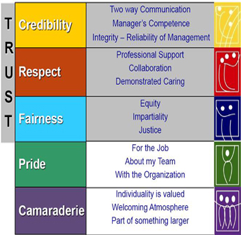Employee Policies and Practices

An employee company handbook is like having a rulebook in sports. It clearly defines the company boundaries, gives ground rules and explanations what is considered acceptable behavior and what is unacceptable behavior. It contains lots of details, from your payroll schedule to vacation policies to the federal, state and industry regulations with which you are mandated to comply.
While a handbook can’t totally protect you from being sued, it can though provide documentation that can help defend actions against the company. For example, if your handbook explains how overtime is calculated and your employees were given the handbook, you may be able to use your policy as documentation to help protect your company.
Just having a handbook is one thing, but making sure your employees are aware of your policies and reviewing annually your policies is just as critical. Having each employee acknowledge in writing the acceptance of the handbook is also critical.
Each business has its own HR requirements and their handbook must be properly researched and assembled to ensure that the important issues relative to your company are clearly defined.
You also have to follow policies consistently. If you distribute a handbook but don’t follow its practices and procedures, you will have a weak defense in the face of a dispute.
Though an employee handbook can be a daunting document to put together, it is priceless in solving problems, resolving arguments, and providing a solid defense. You need one as soon as you hire your very first employee.
Recruiting and Retention

Recruitment is the process of attracting, screening and selecting qualified people. It is an important company activity in securing an effective workforce. Good recruitment is about finding the optimal person for a particular job which has several implications such as business performance, image with customers & industry, staffing levels, and profitability. A well defined Recruitment Strategy is devised at encouraging potential employees to work for your company.
Hiring an employee is only the first step. Building awareness of the importance of employee retention is paramount. The costs associated with extensive employee turnover can lead to lost customers and business, as well as damaged employee morale. In addition, there are costs incurred in screening, verifying credentials and references, interviewing, hiring and training a new employee. Retention strategies strengthen the ability of businesses to attract and retain their human capital. Once the right staff has been recruited, retention practices need to be implemented to secure a healthy business.
Employee Profit Sharing Plans

Employee profit-sharing plans are a type of defined contribution retirement plan. There are benefit plans that allow employers to contribute to an account that earns tax-deferred income until the money is actually distributed. The employer's contributions are usually based on a percentage of company profits. Often, profit-sharing plans involve the utilization of a 401(k) plan, where the employee makes voluntary contributions out of pre-tax salary.
Profit-sharing plans involve some risks where the benefits may be inadequate for retirement. The advantages from the employer’s view are that there is no commitment requiring contributions to the plan during lean years.
Each plan has a trustee who is generally responsible for managing the plan. Other administrative duties are overseen by a plan administrator, who will frequently hire a third-party administrator to perform most administrative functions. Most plans contain a vesting schedule, often between three and six years, during which time an employee becomes fully vested in the plan.
By crafting a proper profit sharing plan, a company can help retain its workforce and keep them happy. Not knowing the appropriate plan can waste company resources and add confusion among your employees. Vertex can help you pick the optimal plan for your business.

